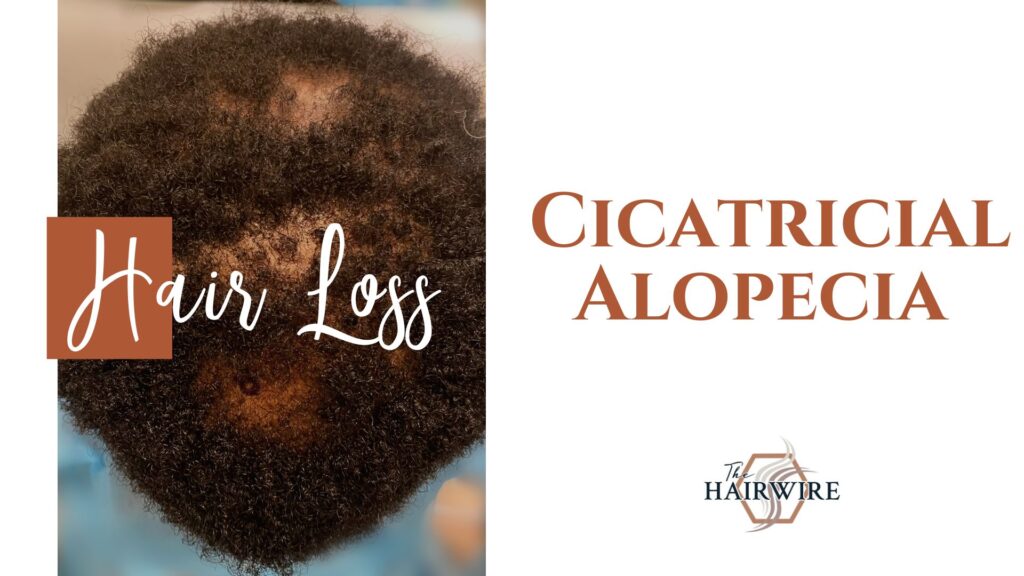Understanding Complexities of Scarring Hair Loss
Hair loss is a common concern that can arise from various factors, but there’s one particular form that often goes under the radar – Alopecia Cicatricial, also known as scarring alopecia. Unlike other types of hair loss, this condition brings a unique set of challenges due to its permanent nature and its impact on the scalp’s structure.
The Nature of Alopecia Cicatricial:
Alopecia Cicatricial is a group of rare hair loss conditions characterized by the destruction of hair follicles and their replacement with scar tissue. This process, known as fibrosis, results in irreversible hair loss. While hair follicles are at the heart of this condition, it’s not just about the loss of hair – it involves the alteration of the underlying scalp architecture.
Causes and Variations:
There isn’t a one-size-fits-all cause for Alopecia Cicatricial. It encompasses various forms, each with its own triggers. Some cases are related to autoimmune responses, where the body’s immune system mistakenly attacks hair follicles. Others might be sparked by infections, trauma, burns, or even certain medications. The inflammatory process is a common thread in most forms of scarring alopecia, leading to the destruction of hair follicles and the replacement of normal tissue with scar tissue.
Impact and Symptoms:
The impact of Alopecia Cicatricial extends beyond the physical aspect. The visible loss of hair often comes with sensations like itching, burning, or pain. The resulting smooth, shiny scalp devoid of hair follicles can significantly affect one’s self-esteem and emotional well-being. The progression of scarring alopecia is often slow but relentless, leading to the realization that early intervention is key.
Diagnosis and Management:
Diagnosing Alopecia Cicatricial requires a comprehensive approach, including a thorough medical history, physical examination, and sometimes a scalp biopsy. Treatment aims to manage inflammation and halt further destruction of hair follicles. Depending on the specific form of scarring alopecia, treatment options can range from topical steroids and oral medications to more advanced therapies.
Staying Informed:
In an effort to shed light on this often-misunderstood condition, we’re dedicated to providing up-to-date resources and information. Our goal is to raise awareness about Alopecia Cicatricial, its variations, and the available management strategies. Through our videos, blog posts, and educational content, we hope to empower individuals to seek timely intervention and take control of their hair health.
Conclusion:
Alopecia Cicatricial may be a complex and lesser-known form of hair loss, but it’s a condition that deserves attention. By understanding its causes, impact, and management approaches, we can navigate the challenges it presents and empower those affected to seek the support they need. If you suspect you’re experiencing symptoms of scarring alopecia or have concerns about your hair health, don’t hesitate to reach out to a qualified healthcare professional or a trichologist for guidance. Remember, knowledge is a powerful tool in the journey to maintaining healthy hair and scalp.



